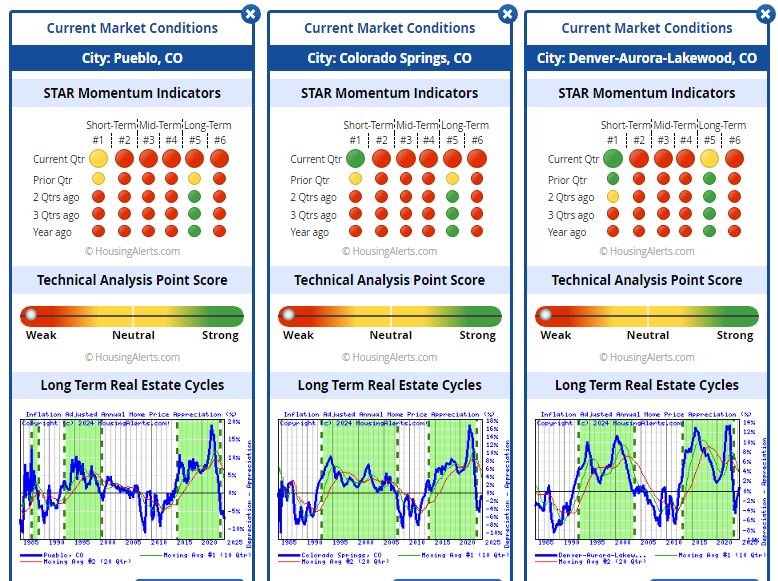Current Status of Front Range Cities Denver, Colorado Springs, and Pueblo
This page is a snapshot of the state of the real estate market from Colorado Springs, Denver area, and Pueblo. Shown below are three graphs of the status of each of these markets (Figure 1.) As I’m most interested in the Front Range of Colorado from Denver to Pueblo, I’m including snapshots of what’s happening there. Generally, green means good for a seller, and red means good for the investor.
